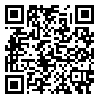BibTeX | RIS | EndNote | Medlars | ProCite | Reference Manager | RefWorks
Send citation to:
URL: http://bcn.iums.ac.ir/article-1-760-en.html

 , Amir Homayoun Jafari *2
, Amir Homayoun Jafari *2 
 , Mohammad Ali Oghabian1
, Mohammad Ali Oghabian1 
 , Hamid Reza Salighehrad1
, Hamid Reza Salighehrad1 
 , Seyed Amir Hossein Batouli2
, Seyed Amir Hossein Batouli2 
 , Samira Raminfard2
, Samira Raminfard2 
 , Hamed Ekhtiari2
, Hamed Ekhtiari2 

2- Department of Nouroimaging and Analysis, Imam Khomeini Hospital Complex, Tehran University of Medical Sciences, Tehran, Iran.
Introduction: Various treatment methods for drug abusers will result in different success rates. This is partly due to different neural assumptions and partly due to various rate of relapse in abusers because of different circumstances. Investigating the brain activation networks of treated subjects can reveal the hidden mechanisms of the therapeutic methods.
Methods: We studied three groups of subjects: heroin abusers treated with abstinent based therapy (ABT) method, heroin abusers treated with Methadone Maintenance Therapy (MMT) method, and a control group. They were all scanned with functional magnetic resonance imaging (fMRI), using a 6-block task, where each block consisted of the rest-craving-rest-neutral sequence. Using the dynamic causal modeling (DCM) algorithm, brain effective connectivity network (caused by the drug craving stimulation) was quantified for all groups. In this regard, 4 brain areas were selected for this analysis based on previous findings: ventromedial prefrontal cortex (VMPFC), dorsolateral prefrontal cortex (DLPFC), amygdala, and ventral striatum.
Results: Our results indicated that the control subjects did not show significant brain activations after craving stimulations, but the two other groups showed significant brain activations in all 4 regions. In addition, VMPFC showed higher activations in the ABT group compared to the MMT group. The effective connectivity network suggested that the control subjects did not have any direct input from drug-related cue indices, while the other two groups showed reactions to these cues. Also, VMPFC displayed an important role in ABT group. In encountering the craving pictures, MMT subjects manifest a very simple mechanism compared to other groups.
Conclusion: This study revealed an activation network similar to the emotional and inhibitory control networks observed in drug abusers in previous works. The results of DCM analysis also support the regulatory role of frontal regions on bottom regions. Furthermore, this study demonstrates the different effective connectivity patterns after drug abuse treatment and in this way helps the experts in the field.
Received: 2016/09/19 | Accepted: 2016/10/26 | Published: 2017/07/1
| Rights and permissions | |
 |
This work is licensed under a Creative Commons Attribution-NonCommercial 4.0 International License. |





